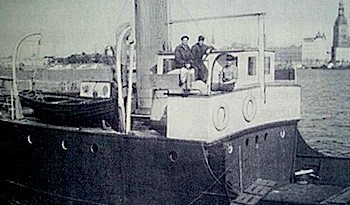Initially, people were engaged in diving without special clothing, holding the air, later they used a tube (reeds), with which they could not dive deeper than a meter. Later, with the development of glass production, the first pressure-resistant underwater goggles were made. Staying in the water for a long time became cold and the need for underwater suits arose.
Thanks to the invention of pressure pumps, it became possible to supply air to a diver through a flexible pipe, but to take it out through a valve. In the 16th century, people began to use a diving dome that was supplied with air from the surface, and it was also the first effective way to stay underwater for a long time. In the 16th century in England and France, divers' suits were made of leather and were used for diving to a depth of 60 feet. The air was pumped from the surface by hand pumps. Taking a bag with air was very limited.
Table of Contents
Origin and use of an underwater call
At the end of the 17th century, people began to use the "underwater bell" (immersion device), in which the air volumes were already relatively larger, but there was almost no mobility. The underwater bell principle was also used in the first underwater helmets, which were later combined with a suit, and a diver's suit emerged in the form we understand it today.
A revolution in the development of diving suits
In 1715, John Letbridge (1675 - 1759) patented the "diving machine", a prototype of a hard suit. It consisted of an oak tube almost two meters long and about seventy centimeters in diameter. The pipe was covered with leather, a porthole and leather cuffs were installed in the hands, the whole construction was a rope. The man entered the machine through a hatch, which was then closed by an assistant and covered with tar. The air supply was not resolved in such an apparatus. Later, solid type suits were invented in which air was supplied by a pump. Similar diving suits are also used today in deepwater works.
The emergence of a diving suit with a metal helmet
The soft diving suit with a metal helmet was created in 1837 by Augusts Zībe (1788 - 1872). Slightly changed, this suit with a hard helmet is still used now. Initially it was made of leather, later of tarpaulin and rubber, which provides durability and waterproofing. In 1943, the legendary French marine researcher Jacques Yves Cousteau (1910 - 1997) and engineer Emil Gannan (1900 - 1979) succeeded in constructing and successfully testing an autonomous type open breathing apparatus - scuba diving.
Later, in the 20th century, many companies emerged that began to offer quality diving suits, such as Aqualung, Bare, Beuchat, Cressi, Scubapro, Seacsub, Mares.

